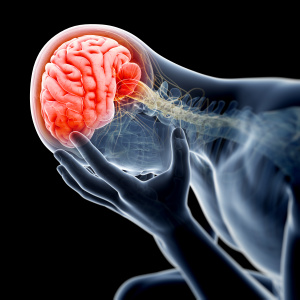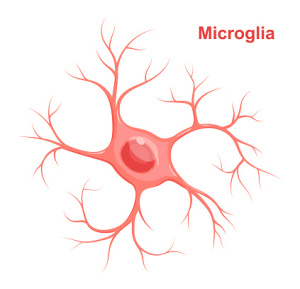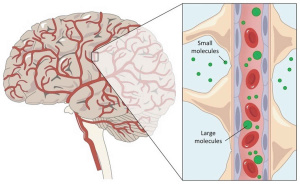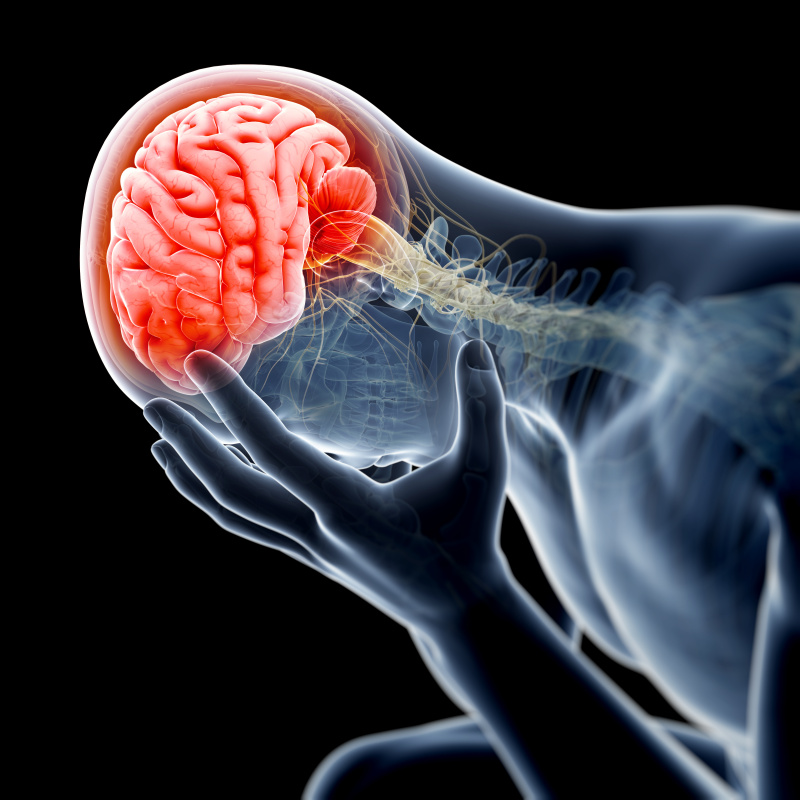Inflamed Brain

Neuroinflammation (inflammation of nervous tissue) is a continuous state of immune system response. In acute (short term) inflammation, cells will release signals in response to injury or infection. These signals will alert immune cells, which will then response and solve the problem. It’s when an acute response goes wrong that inflammation becomes a problem. In chronic inflammation cells will keep release signals and the immune cells can’t fix the problem, causing constant and long-term inflammation. This chronic inflammation is often associated with age and neurodegenerative disorders.
Key Players:

Microglia: the innate immune cells of the CNS. They are constantly patrolling and watching for infection or injury to respond to. They respond rapidly, and are the first and main form of immune defense in the brain. They often recruit other immune cells to aid in their roles. It’s easy to think of them as the cops of the brain.
Cytokines: a family of proteins that regulate many cell processes, including cell development, death, and inflammation. When cells sense a foreign thing or are injured they will secrete pro-inflammatory cytokines as a signal to microglia that there is something wrong. Their role in inflammation is essentially waving a red flag to get microglia’s attention.
Alzheimer’s Disease:
Alzheimer’s is a neurodegenerative disease that is characterized by beta-amyloid plaques and neurofibrillary tangles. Beta-amyloid plaques are build-up of amyloid-beta proteins outside of the cell, and tangles are the build up of a Tau proteins inside of the cell. Both of these protein clumps interfere with neuron communication and eventually lead to neuron death. The plaques and tangles that appear with Alzheimer’s disease are not supposed to be present in the brain. As such, when cells sense these deposits they secrete pro-inflammatory cytokines to alert the immune system that there is something that needs to be fixed. The microglia that are patrolling the brain respond to the build up of these proteins, and are also recruiting other immune cells to help. However, microglia and other immune cells are not able to effectively destroy the beta-amyloid plaques, and since the tangles are present only inside the cell, they aren’t able to do anything about the tangles and the cell will eventually die. But the immune cells don’t give up! They keep attempting to destroy the plaques, and cells will keep releasing pro-inflammatory cytokines. This prolonged response causes the chronic neuroinflammation that is present in Alzheimer’s disease.
Breaking the Brain’s Armor:
As mentioned before, cytokines do a ton of things in the body. They regulate inflammation and also cell survival. The excessive release of cytokines during chronic neuroinflammation can have some damaging effects. You may have heard of the blood-brain-barrier (BBB), the BBB is a layer of cells and blood vessels that surround the brain and protect it from the environment of the rest of the body. It let’s the good things in and keeps the bad things out. Think of it like a set of armor or a shield surrounding the brain. Too many cytokines circulating the brain can damage the BBB, and allow outside cells and proteins into the brain. During neuroinflammation the BBB is often compromised, which allows peripheral (body) immune cells to be recruited into the brain by microglia. These peripheral immune cells increase inflammation and worsen neuroinflammation.
